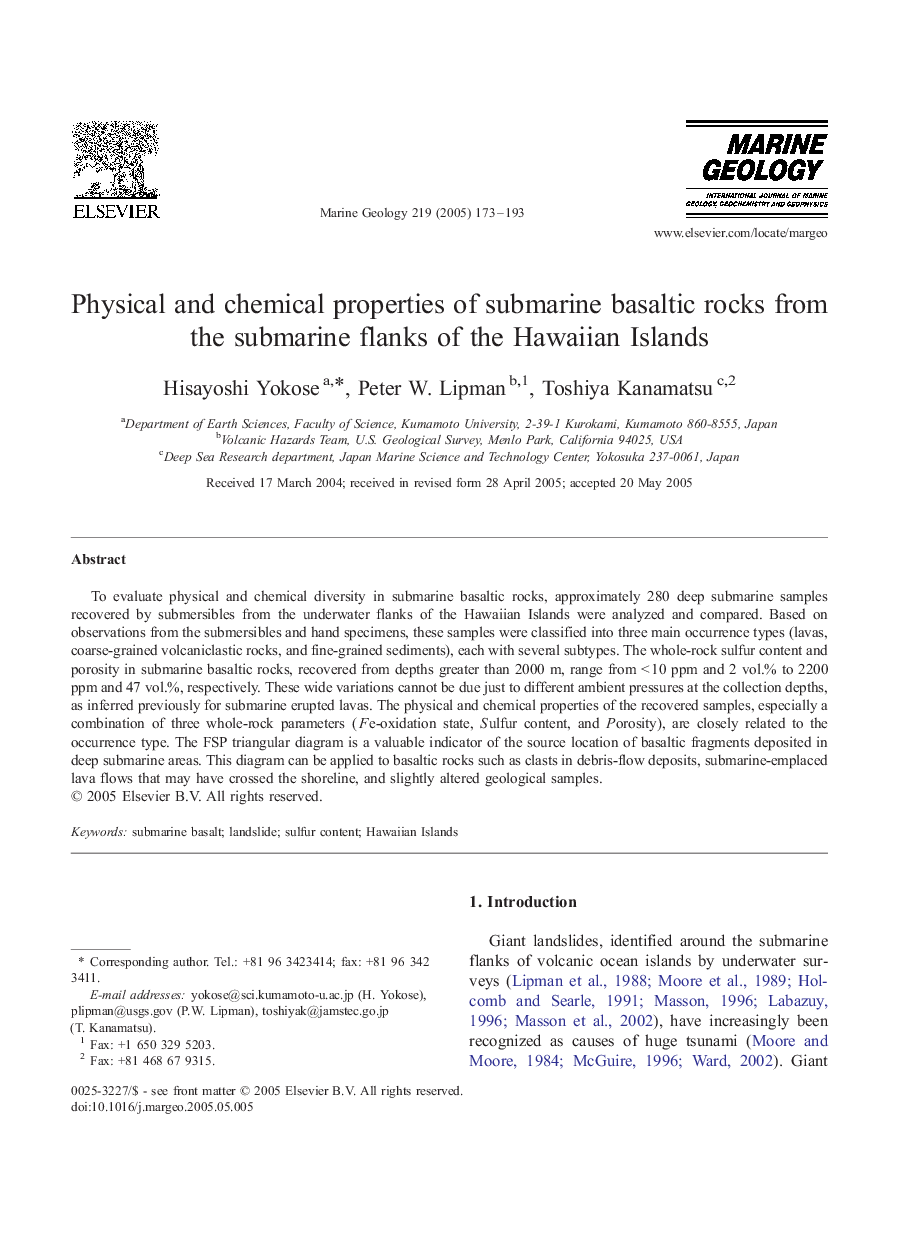| Article ID | Journal | Published Year | Pages | File Type |
|---|---|---|---|---|
| 9532596 | Marine Geology | 2005 | 21 Pages |
Abstract
To evaluate physical and chemical diversity in submarine basaltic rocks, approximately 280 deep submarine samples recovered by submersibles from the underwater flanks of the Hawaiian Islands were analyzed and compared. Based on observations from the submersibles and hand specimens, these samples were classified into three main occurrence types (lavas, coarse-grained volcaniclastic rocks, and fine-grained sediments), each with several subtypes. The whole-rock sulfur content and porosity in submarine basaltic rocks, recovered from depths greater than 2000 m, range from <Â 10 ppm and 2 vol.% to 2200 ppm and 47 vol.%, respectively. These wide variations cannot be due just to different ambient pressures at the collection depths, as inferred previously for submarine erupted lavas. The physical and chemical properties of the recovered samples, especially a combination of three whole-rock parameters (Fe-oxidation state, Sulfur content, and Porosity), are closely related to the occurrence type. The FSP triangular diagram is a valuable indicator of the source location of basaltic fragments deposited in deep submarine areas. This diagram can be applied to basaltic rocks such as clasts in debris-flow deposits, submarine-emplaced lava flows that may have crossed the shoreline, and slightly altered geological samples.
Related Topics
Physical Sciences and Engineering
Earth and Planetary Sciences
Geochemistry and Petrology
Authors
Hisayoshi Yokose, Peter W. Lipman, Toshiya Kanamatsu,
